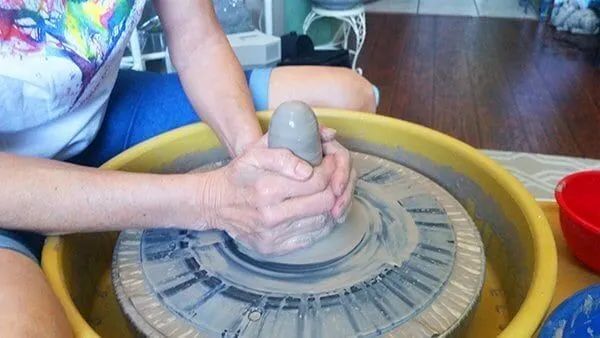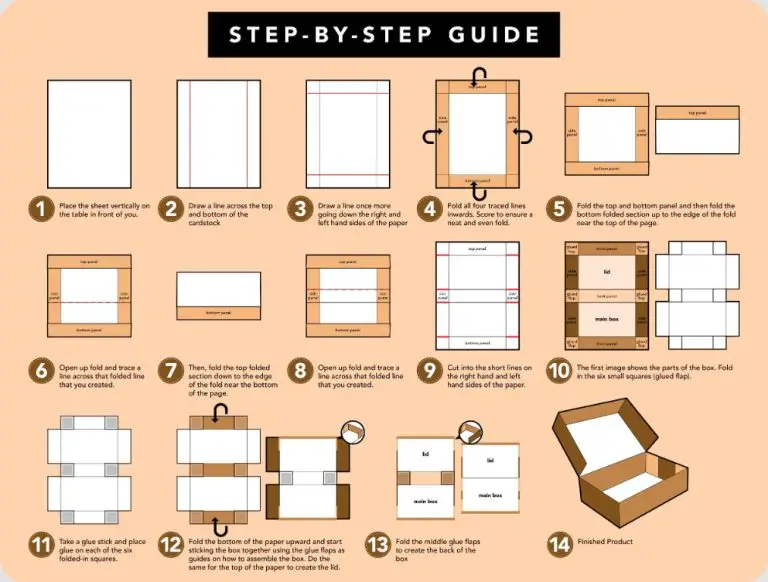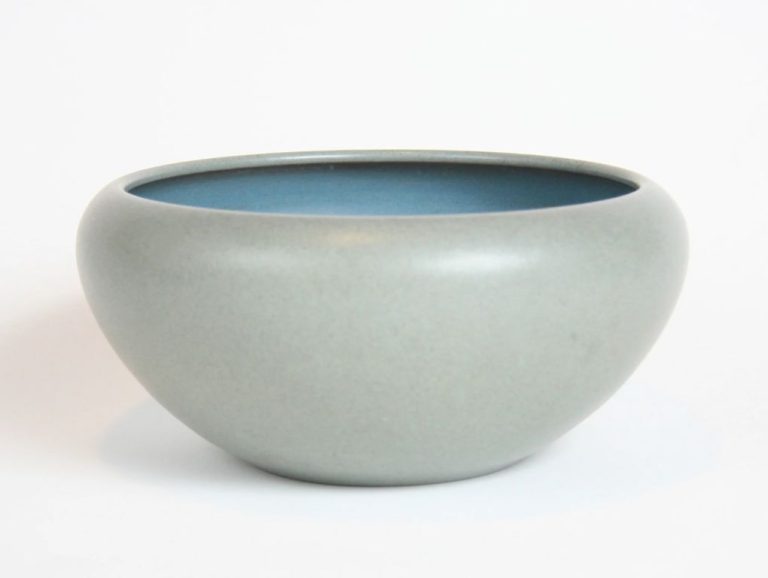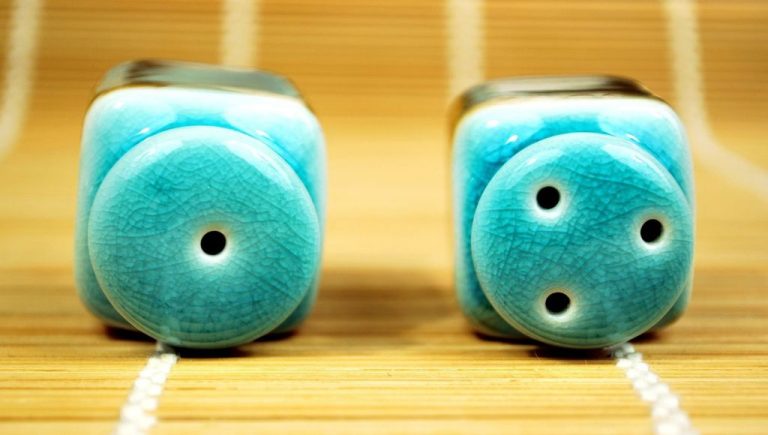Is Pottery On The Wheel Difficult?
Pottery wheels have been used for thousands of years to shape clay into pots, bowls, vases, and other vessels. The wheel allows potters to efficiently and consistently produce rounded objects that would be difficult or impossible to make by hand.
While the pottery wheel enables remarkable control and accuracy, it is also a difficult tool to master. Using the wheel requires learning specialized techniques and building up muscles through consistent practice. Many beginners find the wheel frustrating at first.
This article provides an overview of pottery wheel basics and examines the main challenges involved. It gathers perspectives from experts and novices alike to assess how difficult wheel throwing is to learn.
History of Pottery Wheels
The pottery wheel is an ancient invention that revolutionized how pottery was made. Evidence suggests the first use of pottery wheels dates back to Mesopotamia around 3500 BCE [1]. The early pottery wheels were made of stone or clay and spun by hand. Potters would place a lump of clay on top of a stone disk and then spin it to form basic shapes. These early wheels enabled more uniform pieces to be produced.
Over the next few thousand years, pottery wheels continued to develop and spread around the world. Around 2500 BCE, potters invented flywheels that used momentum to keep the wheel spinning, allowing smoother throwing [2]. Kick wheels emerged in China around 2000 BCE and eventually spread westward along the Silk Road. Kick wheels consist of a heavy flywheel that is spun using the foot, freeing up the potter’s hands. By 100 CE, most areas with advanced pottery used some type of wheel, dramatically increasing production.
In the 18th century, the kick wheel was adapted to be powered by a treadle, enabling more controlled spinning. Finally, in the 19th century, electric motors started being used to power wheels, which is now the standard. While the basic mechanics have changed, the pottery wheel still serves the essential function of efficiently shaping clay into precisely formed ceramic ware.
Basic Process of Using a Pottery Wheel
The basic process of using a pottery wheel involves several key steps:
Centering the Clay
Centering the clay is one of the most important foundational skills in working with a pottery wheel. It involves securing a lump of clay on the wheel head, then using your hands to push and squeeze the clay into a centered position while the wheel is turning slowly. Proper centering ensures the clay will rise evenly as you shape it. It takes practice to center clay quickly and efficiently.
Opening the Clay
Once centered, the next step is to open up the solid lump of clay by pushing your thumbs into the center while widening the walls. Opening up the ball of clay forms the inside space of your pottery piece. Use the wheel’s speed to smoothly expand the opening. Take care not to thin the walls too much at this stage.
Raising the Walls
With an open, centered mound of clay formed, you can then use your hands to pull up the walls, gradually raising them to the desired height. Apply gentle pressure with your fingers and palms while the wheel spins at a steady speed. The walls must be raised at an even thickness to ensure stability.
Shaping the Clay
Now the general form can be shaped by pushing against the outsides of the turning clay. Shape the width, curves, and proportions as desired. Use different techniques like pinching and smoothing for best results. This stage allows creativity in forming bowls, vases, cups, and other pottery forms.
Trimming Excess Clay
Finally, once the basic shaping is complete, a pottery tool is used to trim excess clay from the bottom of the piece. This leaves a smooth, even base. The walls can also be thinned and smoothed with trimming as needed. Allow the pottery to partially harden before trimming.
Required Skills
There are several key skills needed to successfully throw pottery on a wheel. According to The Crucible’s guide to wheel throwing, some of the most important are:
Hand-eye coordination: Throwing pottery requires simultaneously coordinating your hands, feet, eyes, and mind. You need strong hand-eye coordination to center the clay on the wheel head while also using your foot to control the wheel speed.https://www.thecrucible.org/guides/ceramics/wheel-throwing/
Balance: While throwing, you must find the right balance between speed, pressure, and technique. Going too fast or pressing too hard can destroy your piece in seconds.
Patience: Developing proficiency on the pottery wheel requires patience and persistence. Throwing has a steep learning curve, so beginners need the patience to learn from their mistakes.
Spatial perception: You need strong spatial skills to visualize the 3D form you want to create and execute the throwing techniques to achieve that form.
Creativity: The wheel allows endless possibilities for creative expression. An eye for interesting shapes, textures, and decorative techniques will help you design beautiful, unique pieces.
Common Challenges
Using a pottery wheel takes practice and skill to master. Some of the most common challenges beginners face include:

- Centering the clay – Getting the clay centered on the wheel head is crucial for being able to shape smooth, even pieces. It takes coordination and a delicate touch to center clay properly.
- Keeping walls even – As you pull up the walls of a piece, it can be difficult to keep them the same thickness all around. Rotating the wheel head smoothly and using consistent pressure is key.
- Avoiding collapse – Tall, thin pieces are prone to collapsing, especially if the clay is too wet. Learning to support the walls as you shape them can help prevent this.
- Mastering techniques – Skills like pulling up walls, trimming excess clay, and attaching separate pieces require practice to perfect. Having an experienced teacher can be very helpful when starting out.
With time and persistence, these challenges become easier to overcome. Having the right tools, a well-maintained wheel, and quality clay also helps new potters avoid common frustrations.
Time Investment Required
Learning to effectively use a pottery wheel requires a significant time investment. While it’s possible to produce basic shapes after just a few introductory lessons, it generally takes extensive practice over weeks or months to gain true proficiency.
According to experienced potters on Reddit and Quora, the progression from beginner to expert can take anywhere from a few months to several years, depending on the frequency and quality of practice. Many advise that it takes at least 20-40 hours of practice just to learn basic centering and shaping techniques. From there, one can expect to spend 100+ hours refining skills and developing mastery of more complex forms and finishing techniques.
Consistent practice is key – short, frequent sessions are more effective than long, sporadic ones. Patience and persistence through frustration are also important. While beginners may see fast initial progress, advancement to intermediate and expert-level wheel skills requires an ongoing commitment over months or years. With regular practice and a willingness to learn, potters at all levels can steadily upskill on the wheel.
Sources:
https://www.quora.com/How-long-does-it-take-to-learn-how-to-use-a-pottery-wheel
https://www.reddit.com/r/Pottery/comments/wd2pob/how_long_did_it_take_you_to_learn_and_get/
Accessibility Considerations
Pottery wheels can present challenges for people with certain disabilities, but adaptive equipment and seated options are available to increase accessibility. Many standard pottery wheels require the user to stand and use leg pressure to spin the wheel, which poses difficulties for wheelchair users. However, there are adaptive pottery wheels designed specifically for seated use, such as the Model #16 Adaptive Brent Pottery Wheel which is wheelchair accessible. The Switch Adapted Pottery Wheel by AdaptAbilities also allows operation by a switch rather than foot pedal.
Other adaptive equipment like modified tools, splash guards, and adjustable tables can further accommodate various disabilities. With these adaptations, pottery wheel activities can become more inclusive. Consulting occupational therapists familiar with adaptive devices for ceramics is recommended to find the best accommodations for each individual’s needs and abilities.
Expert Perspectives
Experienced potters agree that the pottery wheel can be quite difficult to master at first. As one reddit user who taught pottery explained, “Here’s the big secret: for some people wheelthrowing is more difficult that for others. So, you have to spend more time on the wheel, make more, watch videos, get a lesson, whatever it takes to ‘get it'” (Source).
An article in The Baltimore Banner also highlighted the challenge of wheel throwing for beginners: “The wheel is a difficult tool. To create the desired shapes, a potter must guide the clay where they want it to go. It’s necessary to keep the clay centered and the wheel moving at an even speed” (Source).
While it does require dedication and practice, experienced potters emphasize that the pottery wheel is a learnable skill with patience and persistence.
Beginner Experiences
Many new pottery wheel students find the process challenging at first. As one beginner shared at a local pottery wheel class, “I was surprised by how difficult it was just to center the clay on the wheel. It took me several tries before I could even get the clay into a basic cylinder shape” (Source). Another student remarked on the importance of patience, saying “Throwing pottery requires a lot of trial and error. I had to throw away many messed up pieces before getting one I was proud of” (Source).
While beginners often feel frustrated at first, many find the process rewarding once they start getting the hang of it. As one new potter put it, “The first few classes were really hard and I wanted to give up. But when I finally centered my first piece of clay and shaped a simple bowl, the feeling of accomplishment was amazing.” Many beginners agree it takes time to build the necessary hand-eye coordination and muscle memory, but the payoff of creating your own pottery makes it worthwhile.
Conclusion
In summary, the difficulty of using a pottery wheel really depends on the individual. For complete beginners, operating a wheel requires developing new motor skills and hand-eye coordination. Getting a feel for centering clay on the wheel and pulling up cylindrical forms takes time and practice. However, with regular practice and persistence, using a pottery wheel becomes much easier over time. Most people find throwing pots on the wheel challenging at first but manageable and enjoyable with enough dedication.
While certain skills like centering clay can be tricky to master in the beginning, throwing pots on a wheel is an accessible craft for most people. With proper instruction and tools, the basic process is straightforward to learn. Having patience, keeping an open mindset, and not getting discouraged by initial struggles will help overcome the obstacles many first-time wheel users face. While developing competency on a pottery wheel requires an investment of time and effort, it is very achievable if one stays committed to regular practice and gradual improvement.






